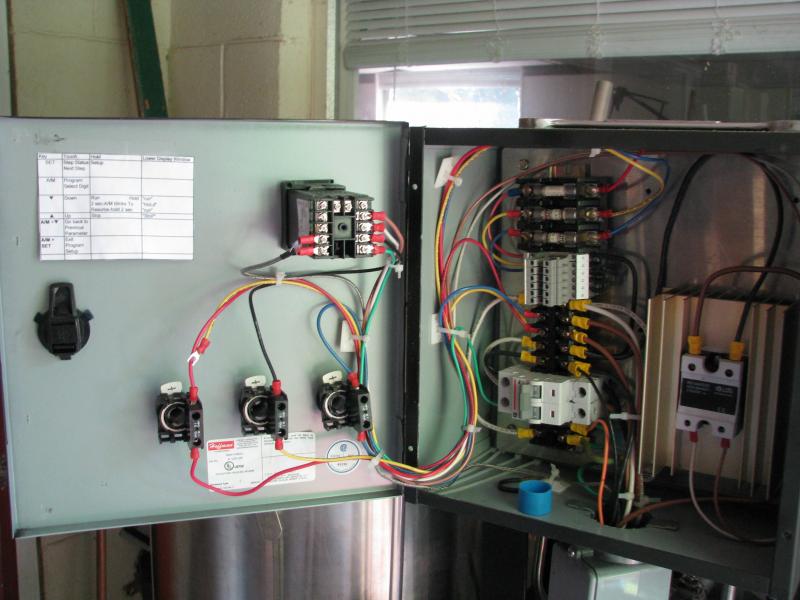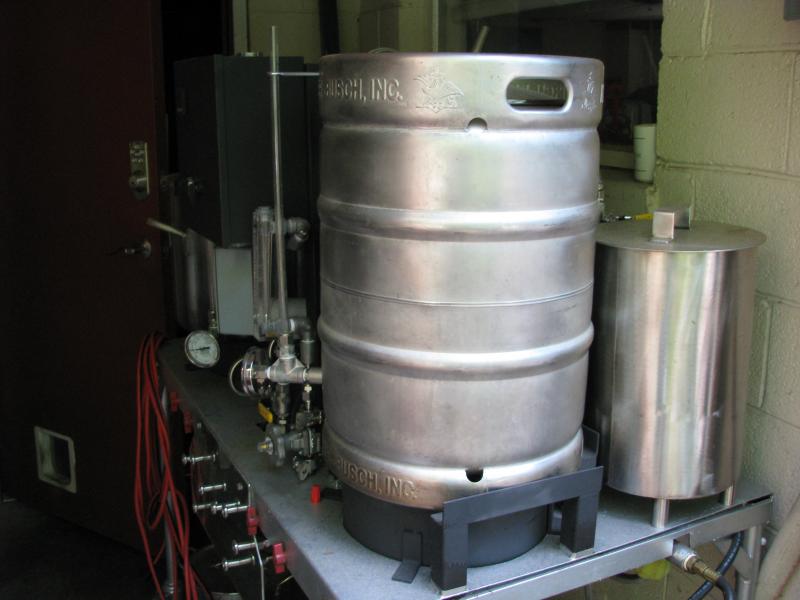I have been trying on and off to resolve a PID/thermocouple (J type) problem since I've had this system was put together....the problem is the PID has never read the correct temperature and I've tried two thermocouples from 2 different suppliers and know one at least works....have worked very closely with Auber Instruments and their support is really good, but the thermo didn't work on my system even though after sending it back they ran a test and found it to be in working order, so that leaves the PID also from them and it appears to also work correctly.......they at one point suggested it was an inductance problem and that is certainly a possibility but I don't even know how to test that any further than reroute it as I've done with no difference.....I have enclosed 2 pics of my system to show the setup....the pid is behind the small tank as the hot wort comes out of the tank and goes to the MT where it is recirculated....the other pic show the back of the thermo to show that it does come up through an electrical enclosure that also has everything else crammed into it to get it to the panel.....I have even removed it from the routing under the table and just ran it over the top of everything to see if that made a difference, but zilch, nada had made a difference....anyone have any ideas to try next....the only thing I'm trying to do is manage the temp of single or multi step mashes....thanks, Lee






